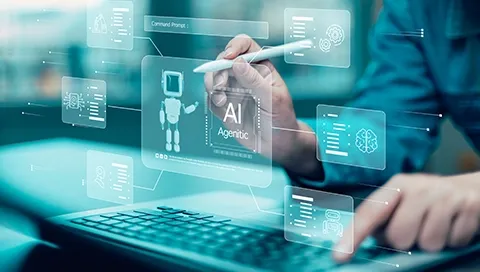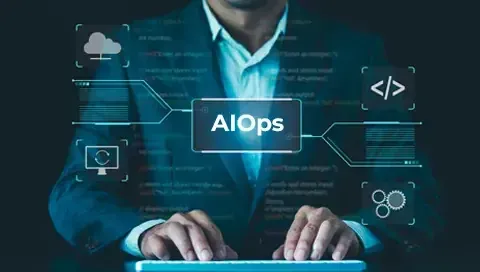Until recently, most enterprises used AI primarily for optimization: refining processes, improving forecasts, or eliminating inefficiencies in specific functions. These efforts were usually confined to narrow use cases and didn’t operate at scale across the organization. These models worked best when the environment was stable and the data inputs predictable.
Large Language Models (LLMs) have extended these capabilities by making it easier to process unstructured data, improve search and retrieval, and interact with systems in natural language. They excel at tasks like summarization, classification, and scalable content generation.
Yet, these strengths also reveal important boundaries. While LLMs generate dynamic outputs and can adapt to prompt context, they aren’t inherently designed for environments where data changes continuously or decisions must be made in real time. Their limitations surface less in creativity and more in stability, predictability, accuracy, and evaluation. They are, as a result, powerful for exploration and summarization, but less suited to execution where precision and traceability are required.
As a technology consulting company, Cybage has observed the practical limits of LLMs in enterprise contexts. For example, media publishers use Generative AI to track and optimize campaigns in near real time, while healthcare organizations rely on AI to transcribe, process, and analyze patient interactions. In these scenarios, LLMs can generate insights and summaries, but they don’t autonomously manage tasks or respond dynamically to changing conditions. Systems trained on historical patterns may struggle with consistency or reliability when workflows evolve or data streams shift unexpectedly.
As AI moves from task-specific assistants to more autonomous, goal-driven systems (what has been termed Agentic AI), enterprises are seeking ways to harness this potential without compromising governance or agility. Our work in Generative AI, automation, and AI-driven support systems demonstrates early forms of these capabilities, streamlining workflows, improving responsiveness, and experimenting with controlled autonomy.
From Optimization to Adaptation: The Shift in AI’s Purpose
Agentic AI implementation moves beyond the ‘input → output’ approach. It senses the state of its environment, evaluates multiple possible actions, makes decisions aligned with defined objectives, and learns from the outcomes in near real-time. These systems mirror how humans operate in complex situations. Instead of simply following the most efficient plan, they monitor conditions, course correct and reprioritize when needed.
Agentic AI systems don’t just respond to commands. They ingest live data streams such as support tickets, code commits, and transaction logs, using a mix of pattern recognition and probabilistic reasoning to problem-solve. The systems hold short-term memory for what’s changing now and long-term memory for historical patterns. This lets them detect when today’s activity could become tomorrow’s problem.
For instance, current agentic AI implementations can:
- Detect surges in similar customer issues and suggest or automate support ticket triage and deflection, helping teams prioritize high-impact cases.
- Analyze code changes across codebase and generate bug reports or highlight risky patterns, providing actionable insights for developers.
- Assist in regulatory or compliance workflows by summarizing updates or flagging areas requiring attention, rather than fully enforcing rules autonomously.
- Coordinate across diagnostic data, treatment protocols, and patient histories to recommend adaptive healthcare workflows.
The advantage of Agentic AI is that it blends the reasoning depth of large language models with the responsiveness of event-driven systems, enabling real-time decision-making and execution. Large language models excel at understanding and generating human-like responses, processing vast amounts of unstructured data, and identifying patterns. When combined with event-driven systems, which are designed to react to changes in the environment as they occur, the result is an AI system capable of sensing, reasoning, and acting in a continuous loop. This allows the system to evaluate multiple possible actions, align decisions with defined objectives, and execute the next best step instantly, all while learning from outcomes to refine future actions.
Cybage, as an AI Consulting Services provider, has seen these patterns emerge across client engagements, forming the early building blocks of truly autonomous, context-aware systems. For example, in customer support scenarios, our solutions have demonstrated the ability to detect surges in similar issues, dynamically adjust routing rules, and allocate resources proactively to prevent bottlenecks. In software delivery pipelines, our systems track code changes, identify risky patterns, and autonomously refactor sections to ensure stability and quality. So, we applied these learnings in re-engineering our internal AI platform SmartPal. Initially designed with static routing, SmartPal has now been rebuilt with an agentic-first backend. Instead of hardcoded flows, autonomous agents dynamically handle decision-making, prioritize tasks, and orchestrate workflows. This transition, implemented over several months, allowed us to make SmartPal fully agentic, resulting in improved adaptability, faster responses, and more accurate outcomes for enterprise users.
These capabilities reflect Cybage’s commitment to pushing the boundaries of AI, transitioning from static systems to adaptive, goal-driven solutions. By blending reasoning depth with responsiveness, Cybage’s Gen AI Software Consulting Services are enabling enterprises to move beyond optimization. They are enabling businesses to embrace AI as a trusted operational peer that drives measurable outcomes, enhances agility, and ensures resilience in dynamic environments.
Architectural Foundations of Agentic AI
At a technical level, agentic AI systems are built on a continuous agent loop: perception → reasoning → planning → action → feedback. This cycle enables agents to not only respond to current inputs but also adapt based on prior outcomes. Key architectural enablers include:
- Memory layers: short-term for immediate signals and long-term for historical knowledge.
- Reasoning engines: combining probabilistic models with symbolic logic.
- Planning modules: evaluating multiple options against defined goals.
- Action interfaces: APIs and connectors to enterprise applications.
This loop architecture allows agentic AI to go beyond prediction and into autonomous execution.
Integration with Enterprise Systems
For enterprises, how agentic AI works must be within existing ecosystems. This requires robust event-driven integration with platforms like ERP, CRM, and SCM. Agents must subscribe to event streams, interpret them in real time, and trigger workflows across interconnected systems. Secure APIs, standardized data schemas, and orchestration platforms make this integration seamless.
Challenges and Guardrails
While powerful, agentic AI also presents unique challenges:
- Latency: Real-time loops can introduce delays without optimized infrastructure.
- Hallucinations: Agents relying on LLMs may generate inaccurate steps.
- Governance: Continuous oversight is required to prevent unintended actions.
- Ethics and bias: Agents must be trained to operate within safe boundaries.
Addressing these ensures agentic AI is not only effective but also reliable in enterprise contexts.
Comparison: LLMs vs Agentic AI

What’s Next
The real leap comes when Agentic AI moves from isolated decision-making to orchestrating entire workflows across interconnected systems. Instead of waiting for manual approval, it can negotiate priorities between departments, schedule resources, and trigger automated responses in milliseconds. It will fuse predictive insights with operational commands, rerouting deliveries before weather disruptions or rebalancing compute loads as demands shift, without pausing for manual intervention. These use cases of Agentic AI require secure APIs, real-time data fusion, and fine-grained control policies to prevent unintended actions. In this model, the AI isn’t just assisting; it becomes a trusted operational peer, driving measurable outcomes while keeping humans firmly in the governance loop.
Agentic AI is the shift from assistance to autonomy. At Cybage, we help enterprises take that step with systems that adapt, decide, and deliver impact. Contact us today!
















